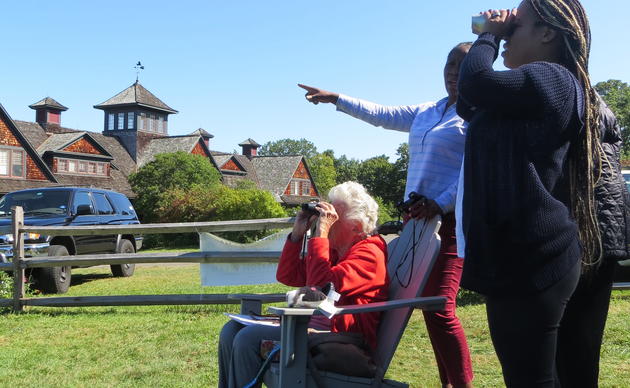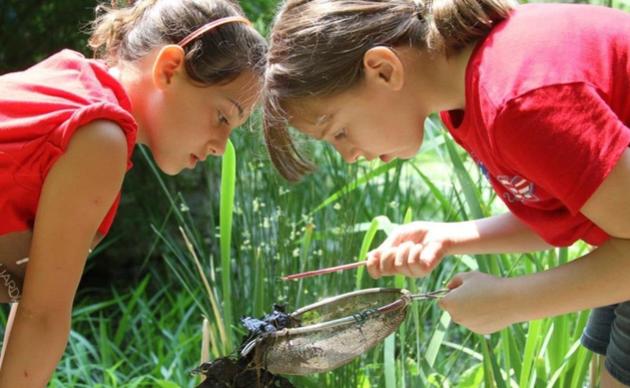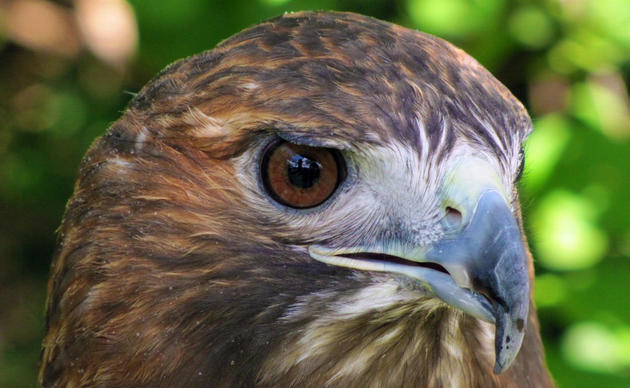Native Shrubs for Birds
Want to beautify your landscape, cut back on maintenance, and help local birds and wildlife? Add native woody plants to your plantings. Natives are adapted to our conditions, which makes caring for them easier, and serve as important food sources and shelter for birds, beneficial insects, and other wildlife. While there are many plants to choose from, here are some great native shrubs to consider adding to your landscape. Though many of these plants grow in the understory in the wild, all will produce more flowers and fruit when grown in full sun.
|
Shadbush Serviceberry (Amelanchier canadensis) blooms in early spring with a profusion of small white flowers. This large shrub or small tree is adaptable to a wide variety of habitats, from wet swampy areas to dry uplands. Shadbush, or shadblow or juneberry, grows 10 to 20 feet tall and flowers best in full sun. It suckers quite freely. The hard red fruits ripen in June, providing an early summer feast for many species of birds, including Scarlet Tanager, Rose-breasted Grosbeak, American Robin, Hermit Thrush, Red-bellied Woodpecker, Hairy Woodpecker, Tufted Titmouse, Cedar Waxwing, Blue Jay, and Gray Catbird. |
|
|
|
Red Chokeberry (Aronia arbutifolia) is a hardy shrub that grows to about 8 feet in height, and half that in width. It can tolerate both wet and dry soils. Full sun produces the most fruit. Nice leaf color in the fall. It has umbels of white flowers that produce clusters of bright red berries later in the summer and attract several birds, including Wild Turkey, Black-capped Chickadee, Eastern Meadowlark, and Cedar Waxwing. |
|
|
|
Silky Dogwood (Cornus amomum) is a multi-stemmed large shrub or small tree with a rounded growth habit, growing to about 10 feet tall and wide. Umbels of creamy white flowers bloom in late spring, with deep blue clusters of fruits in the summer. This plant likes moist soils and is a good choice to use on wet sites for mass border plantings. The fruits attract many birds, including Wood Duck, Wild Turkey, Northern Flicker, Downy Woodpecker, Gray Catbird, Thrushes, Northern Mockingbird, and Northern Cardinal. |
|
|
|
'Jolly Red' Winterberry (Ilex verticillata ‘Jolly Red’) can grow 10 to 15 feet in height. Its tiny white flowers bloom in June; you will need at least one male plant to pollinate the female plants to produce berries. Unlike other hollies, the dark green leaves are deciduous and its bright red berries crowd its bare winter stems, making a spectacular show. Winterberry is a plant of wet areas, but will do reasonably well under dry conditions. Acid soil is preferable, and full sun will produce the most berries. It is a favorite of many bird species, including American Robin, Hermit Thrush, Eastern Bluebird, Yellow-bellied Sapsucker, and White-throated Sparrow. |
|
|
|
Spicebush (Lindera benzoin) is a fairly large, open shrub that grows in very wet conditions, including swampy areas. A good understory plant for shaded wetlands. Its small, greenish-yellow flowers are some of the first to bloom in the spring, a welcomed sight after a long winter. When crushed, its leaves and stems give off a spicy scent. Spicebush grown in sun will produce red berries in late summer, providing nutrition for migrating birds, including Wood Thrush, Hermit Thrush, Veery, Red-eyed Vireo, and Gray Catbird. As a host plant for the Spicebush Butterfly, an added bonus is the discovery of spicebush caterpillars on the shrub’s foliage in the summer. |
|
Trumpet Honeysuckle (Lonicera sempervirens) is a twining woody vine with round to oval leaves. The lovely tubular flowers make quite a show in late spring to early summer and are a favorite of Ruby-throated Hummingbirds. It's best to encourage the vine to climb a trellis or other support. |
|
|
|
Virginia Rose (Rosa virginiana) is a native rose with lovely, fragrant, 2-inch pink blossoms in June that turn to red rose hips in August. The fruit is edible and persists on the canes through the winter. The shrub grows 4 to 6 feet tall; give it plenty of room since it spreads rapidly by suckering. Established thickets provide protective cover and nesting sites for birds. The nutritious hips provide winter/spring food for Wild Turkey, Brown Thrasher, American Robin, Eastern Bluebird, Northern Mockingbird, Northern Cardinal, Cedar Waxwing, and American Goldfinch. |
|
|
|
Lowbush Blueberry (Vaccinium angustifolium) is a wonderful little shrubby groundcover that is not too fussy about soil type. It grows to about 18 inches tall and features shiny leaves. White urn-shaped flowers in early summer produce small blueberries in August. Birds known to enjoy the bonanza include Wild Turkey, Scarlet Tanager, American Robin, Eastern Bluebird, Northern Flicker, Gray Catbird, Blue Jay, and Orioles. |
|
|
|
Highbush Blueberry (Vaccinium corymbosum) is a 6 to 8-foot shrub with glossy leaves that turn spectacular colors in the fall, including dark mahogany. Though it grows in dry, open fields, it is happiest in wet, boggy areas where the soil is peaty and acidic. White urn-shaped flowers in early summer produce delicious mid-summer berries, which are loved by Wild Turkey, Scarlet Tanager, most thrush species, Black-capped Chickadee, Tufted Titmouse, Gray Catbird, Blue Jay, Eastern Towhee, and Orioles. |
|
|
|
Possumhaw Viburnum (Viburnum cassinoides/nudum), aka witherod, grows about 8 to 10 feet in height and produces flat-topped clusters of small white flowers in early summer. Its fruit turns from green to pink with purple centers as summer progresses. This shrub prefers peaty damp soil; it can grow along the edge of ponds in very wet conditions. Wild Turkey, Brown Thrasher, American Robin, Eastern Bluebird, Northern Cardinal, Pileated Woodpecker, and Cedar Waxwing eat the fruit. |
|
|
|
Cranberrybush Viburnum (Viburnum trilobum) grown in full sun can be quite spectacular when in bloom with its showy white 3 to 4-inch-wide flower clusters. This large shrub grows 8 to 10 feet in height with a spread of about the same. It has three-lobed, shiny leaves and likes moist soil with good drainage. Bright red fruit clusters mature in September and can hang on the plant into the winter, providing food for Wild Turkey, various thrushes, Cedar Waxwing, and Northern Cardinal. |
Help make the world a better place
Learn & Explore
Where birds thrive, people prosper. Help us transform local communities into places where birds flourish. Learn what you can do to nurture wildlife, nature, and conservation in Connecticut.
Support Our Work
Through land stewardship, science, education, and advocacy, we work to preserve habitat and protect bird species that are of state, national, and global concern. Your gift can make a difference.
Join Our Family
When you become a member of Greenwich Audubon Center, you are nurturing bird-friendly communities and a natural heritage for generations to come. Help us do great things.




